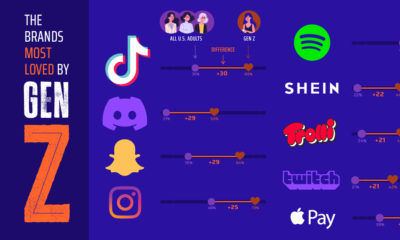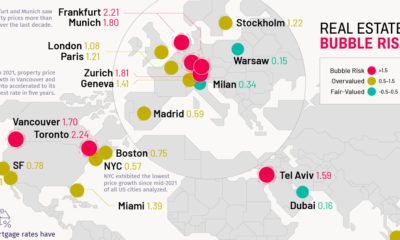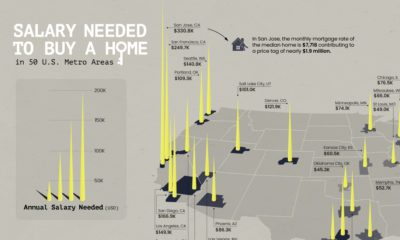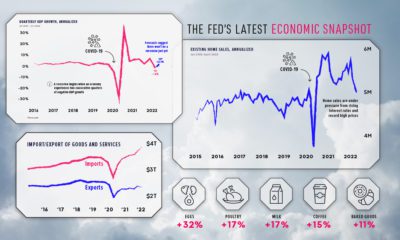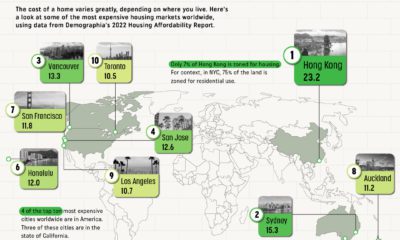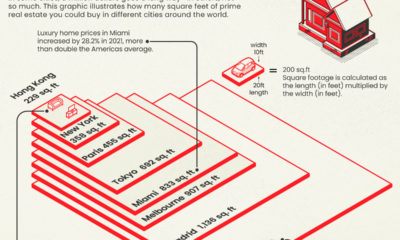Millennials are Buying Their First Homes, and Here’s What They Want
Authorities disagree on the exact birth years of the Millennial generation: for example, Pew Research defines Millennials as being born between 1981-1997, the US Census Bureau claims 1982-2000, and the National Association of Realtors says 1980-1995. However, what all these same sources agree upon is that the Millennials are the largest and most powerful demographic force in North America. In the United States specifically, Millennials account for a quarter of the entire population with a total of 83.1 million people in the demographic. This is a group that makes up the next generation of investors, continues to struggle with mounting student debt, thinks about money differently, and is now buying homes for the first time. Marketers in all industries have tried to nail down the preferences of Millennials for some time. Millennials have made things especially more difficult for the real estate industry, as they have delayed common life milestones such as marriage, having children, and home ownership. It is only over the last few years, as Millennials have started to buy homes in significant numbers, that the industry has truly understood what the group wants to see in a home. Millennial home buyers make up 68% of all first-time home buyers right now, and here’s their average profile: 29 years old, a median income of $76,900, and a typical home purchase (median) of $189,900 for a 1,720 sq. ft home. Of these buyers, 84% believe a home to be a good investment. Where do Millennials want to buy? About half of the cohort (49%) wants to buy in the suburbs, while 21% would prefer to buy in an urban area. In terms of choosing a specific neighborhood, the most-cited factors affecting Millennials’ decisions were the quality of neighborhood (75%), convenience of getting to job (74%), affordability of home (58%), proximity to friends and family (49%), and quality of the school district (44%). Today, 32% of all home purchases are made by Millennials, but the reality is that many are still holding off on buying. The major reason for that is student debt, which 54% cited as the biggest obstacle to home ownership. In fact, about one-quarter of all Millennials still live with their parents. Other reasons cited for not owning a home yet? They include: excessive debt, rising rents, slowing wage growth, tight-lending environment, can’t find home in desired price range, increased college enrollment, and delayed marriage/children. Original graphic by: UpNest
on Even while political regimes across these countries have changed over time, they’ve largely followed a few different types of governance. Today, every country can ultimately be classified into just nine broad forms of government systems. This map by Truman Du uses information from Wikipedia to map the government systems that rule the world today.
Countries By Type of Government
It’s important to note that this map charts government systems according to each country’s legal framework. Many countries have constitutions stating their de jure or legally recognized system of government, but their de facto or realized form of governance may be quite different. Here is a list of the stated government system of UN member states and observers as of January 2023: Let’s take a closer look at some of these systems.
Monarchies
Brought back into the spotlight after the death of Queen Elizabeth II of England in September 2022, this form of government has a single ruler. They carry titles from king and queen to sultan or emperor, and their government systems can be further divided into three modern types: constitutional, semi-constitutional, and absolute. A constitutional monarchy sees the monarch act as head of state within the parameters of a constitution, giving them little to no real power. For example, King Charles III is the head of 15 Commonwealth nations including Canada and Australia. However, each has their own head of government. On the other hand, a semi-constitutional monarchy lets the monarch or ruling royal family retain substantial political powers, as is the case in Jordan and Morocco. However, their monarchs still rule the country according to a democratic constitution and in concert with other institutions. Finally, an absolute monarchy is most like the monarchies of old, where the ruler has full power over governance, with modern examples including Saudi Arabia and Vatican City.
Republics
Unlike monarchies, the people hold the power in a republic government system, directly electing representatives to form government. Again, there are multiple types of modern republic governments: presidential, semi-presidential, and parliamentary. The presidential republic could be considered a direct progression from monarchies. This system has a strong and independent chief executive with extensive powers when it comes to domestic affairs and foreign policy. An example of this is the United States, where the President is both the head of state and the head of government. In a semi-presidential republic, the president is the head of state and has some executive powers that are independent of the legislature. However, the prime minister (or chancellor or equivalent title) is the head of government, responsible to the legislature along with the cabinet. Russia is a classic example of this type of government. The last type of republic system is parliamentary. In this system, the president is a figurehead, while the head of government holds real power and is validated by and accountable to the parliament. This type of system can be seen in Germany, Italy, and India and is akin to constitutional monarchies. It’s also important to point out that some parliamentary republic systems operate slightly differently. For example in South Africa, the president is both the head of state and government, but is elected directly by the legislature. This leaves them (and their ministries) potentially subject to parliamentary confidence.
One-Party State
Many of the systems above involve multiple political parties vying to rule and govern their respective countries. In a one-party state, also called a single-party state or single-party system, only one political party has the right to form government. All other political parties are either outlawed or only allowed limited participation in elections. In this system, a country’s head of state and head of government can be executive or ceremonial but political power is constitutionally linked to a single political movement. China is the most well-known example of this government system, with the General Secretary of the Communist Party of China ruling as the de facto leader since 1989.
Provisional
The final form of government is a provisional government formed as an interim or transitional government. In this system, an emergency governmental body is created to manage political transitions after the collapse of a government, or when a new state is formed. Often these evolve into fully constitutionalized systems, but sometimes they hold power for longer than expected. Some examples of countries that are considered provisional include Libya, Burkina Faso, and Chad.

